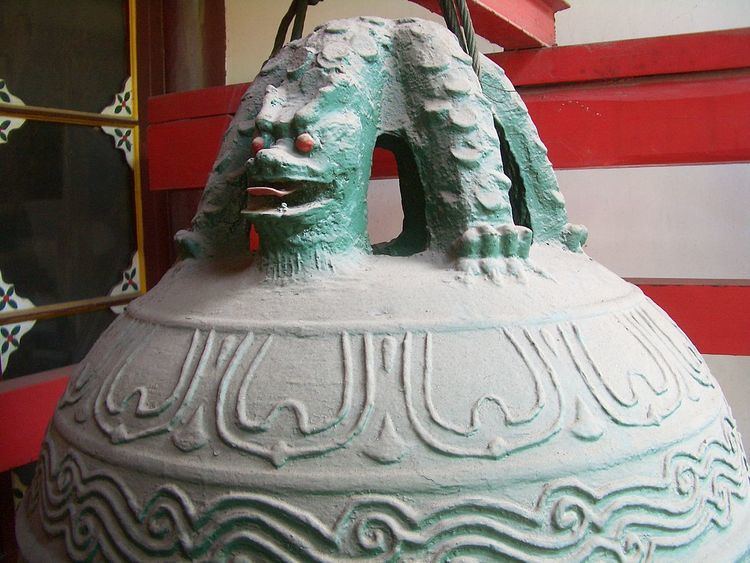 | ||
Similar Taotie, Chi (mythology), Eight Immortals | ||
The nine sons of the dragon are Chinese dragons who are the mythological sons of the Dragon King. There are many variations in the different descriptions of the nine sons, including in basic facts like their names, but all versions state that there are nine.
Contents
History
The oldest known attestation of the children of the dragon list is found in the Shuyuan Zaji (椒园杂记, Miscellaneous records from the bean garden) by Lu Rong (1436–1494); however, he noted that the list enumerates mere synonyms of various antiques, not children of a dragon.
Several Ming Dynasty texts list what were claimed as the Nine Offspring of the Dragon (Chinese: 龍生九子; pinyin: Lóng shēng jiǔzǐ), and subsequently these feature prominently in popular Chinese stories and writings. The scholar Xie Zhaozhe (謝肇淛, 1567–1624) in his work Wu Za Zu (五雜俎, ca. 1592) gives the following listing in order of oldest to youngest, as translated by M.W. de Visser in 1913:
A well-known work of the end of the sixteenth century, the Wuzazu 五雜俎, informs us about the nine different young of the dragon, whose shapes are used as ornaments according to their nature.
Further, the same author enumerates nine other kinds of dragons, which used as ornamental decoration or as part of classical Chinese architecture. These examples can be found architecture throughout Asia used for adorning key-holes, on roofing, incense burners, door knockers, bridges, etc.
The Sheng'an waiji (升庵外集) collection by the poet Yang Shen (楊慎, 1488–1559) gives different 5th and 9th names for the dragon's nine children: the taotie (饕餮), which loves to eat and is found on food-related wares, and the jiaotu (椒圖), which looks like a conch or clam, does not like to be disturbed, and is used on the front door or the doorstep. Yang's list is bixi, chiwen or cháofēng, pulao, bi'an, taotie, qiuniu, yazi, suanni, and jiaotu.
Modern names
The 9 sons of the dragon were recognized by the Chinese government's official Shanghai Mint in 2012's year of the Dragon by issuing 2 sets of coins, one in silver and one in brass. Each coin in the 9 coin sets depicts one of the 9 sons. A 10th additional coin was issued depicting the father dragon in silver and brass, which has iconography of the 9 sons on the reverse, for a total of 20 coins in the series. The coins are certified by NGC with the following names:
Number nine
The number nine is special in China as it is the largest possible single digit, and Chinese dragons are frequently connected with it. For example, a Chinese dragon is normally described in terms of nine attributes and usually has 117 (9x13) scales - 81 (9x9) Yang and 36 (9x4) Yin. This is also why there are nine forms of the dragon and there are 9 sons of the dragon. The Nine-Dragon Wall is a spirit wall with images of nine different dragons, and is found in imperial Chinese palaces and gardens. Because nine was considered the number of the emperor, only the most senior officials were allowed to wear nine dragons on their robes — and then only with the robe completely covered with surcoats. Lower-ranking officials had eight or five dragons on their robes, again covered with surcoats; even the emperor himself wore his dragon robe with one of its nine dragons hidden from view.
There are many places in China with the phrase "Nine Dragons" in their name, the most famous being Kowloon (in Cantonese) in Hong Kong. The part of the Mekong in Vietnam is known as Cửu Long, with the same meaning.
